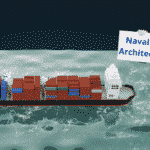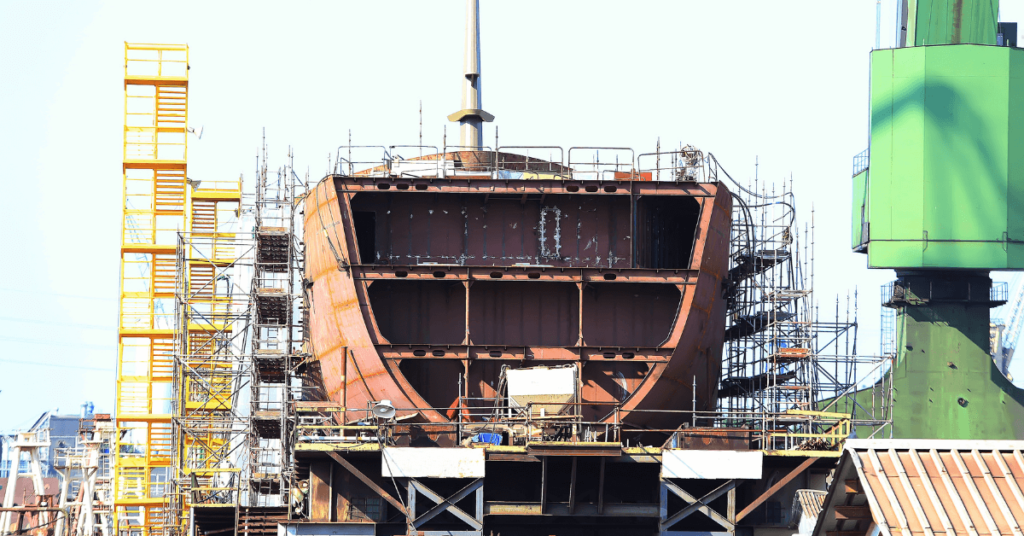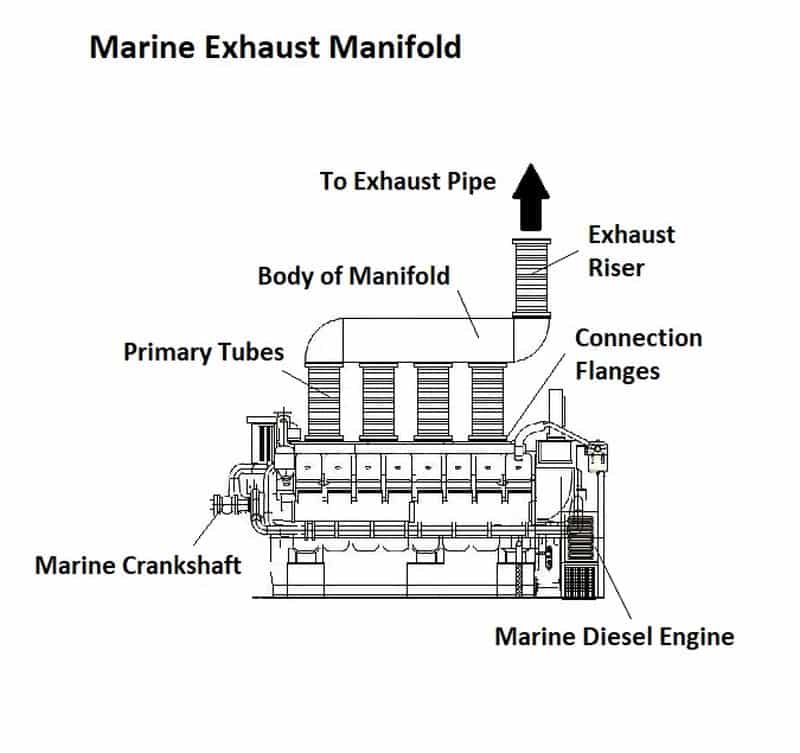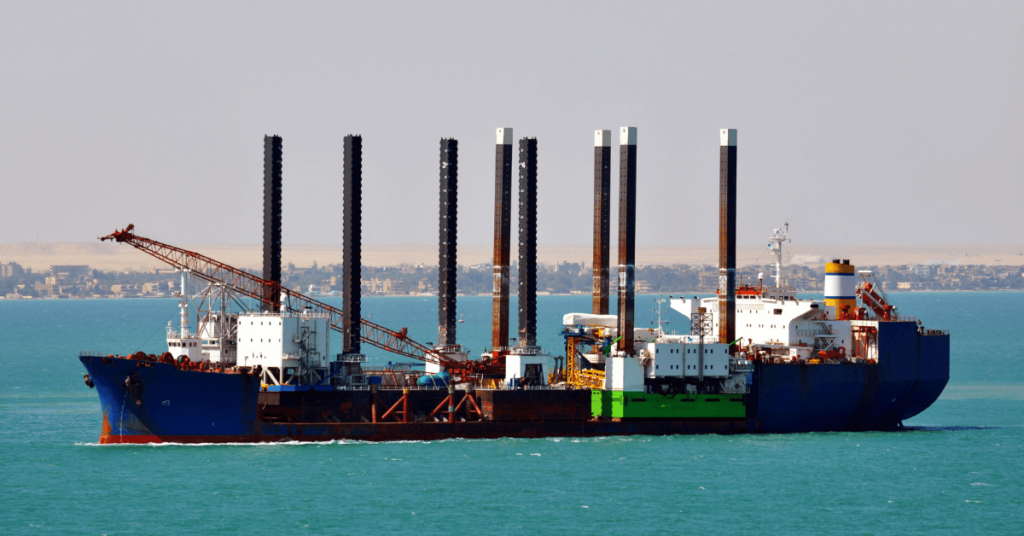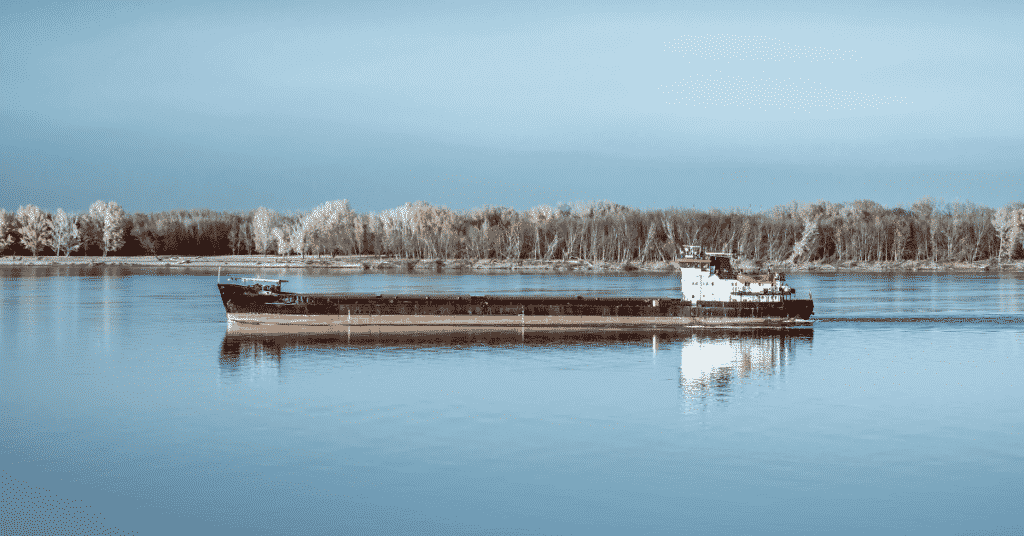Understanding Lumber Carrier Vessels
A large variety of goods are transported on a daily basis by the global shipping industry. From fresh produce to oil and gases, each commodity comes with its own transport conditions and restrictions.
One of the most common types of ships used to transport goods is the bulk cargo carrier. This vessel specializes in shipping large quantities of loose items such as ore, grain, industrial components, and cement.
In this article, we will look at a unique class of bulk carriers, known as lumber carrier vessels.
Along with the bulk carrier design and operations, we will also analyse the issues and problems commonly faced by these vessels.
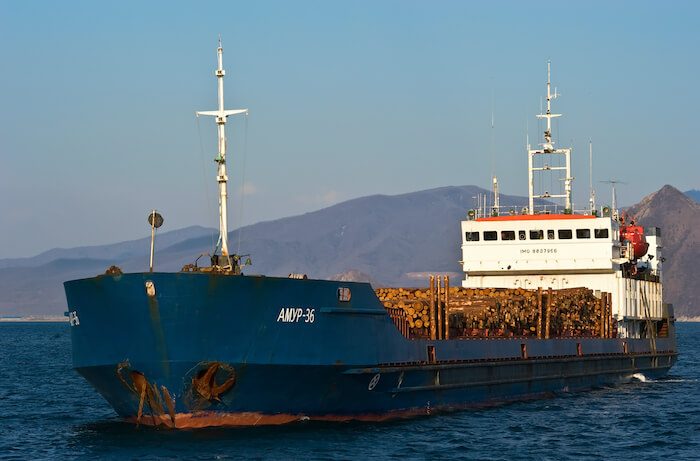
Introduction to Lumber Carrier Vessels
Lumber refers to wooden logs or panels that have been prepared for industries such as furniture, construction etc. Generally, the term lumber is specific to semi-processed wooden beams that have been cut. This is different from timber that refers to untreated wooden goods.
Lumber based cargo are further processed at specialised industries after reaching their destination and are transported to local factories through road and rail transport. Interestingly, lumber carriers are also equipped to carry timber and other wood products. For instance, wood chips, wooden blocks, and even wooden logs are transported by these carriers.
Transporting lumber has its own fair share of challenges, the primary being the shape and size of wooden logs. Considering its cylindrical shape, stacking and loading can be a major issue.
For this, specific equipment and structures have to be used. In general, most lumber carriers only have a single deck. The goods are stored inside specially designed holds below the deck, and can also be stored on the main deck subject to safety restrictions.
For instance, wooden logs can be stored above deck as long as it is safely restrained. However, wood chips and other loose substances can only be stored within the holds. Thus, prior to estimating the cargo tonnage that can be shipped, it is important to analyse the type of cargo and the transport conditions that may apply to it.
Most lumber carriers span over 200 meters in length and have a beam of between 30 to 40 meters. The average deadweight tonnage of the vessels lies between 60,000 to 80,000 DWT. In the next section, we will take a detailed look at the design of these lumber carriers, and how they may differ from other regular vessels.
Design of Lumber Carriers
From a broad classification, lumber carriers are a category of bulk cargo vessels. Bulk carriers are designed to utilize maximum space for cargo storage and transport. In this regard, the primary storage site is the holds situated below deck. Also known as hatches, they can be accessed through the hatch covers present on the deck.
The sides of the ship’s hull are generally of shell design, to provide additional strength and torsional stiffness to the vessel. However, in case other stiffening members have been used, these vessels may only have a single hull framework. The space between the side shells is used to house electronics, piping and other systems that may need to run along the length of the ship.
Heating, Ventilating and Air Conditioning (HVAC) systems and other equipment can often be found within the side shell.
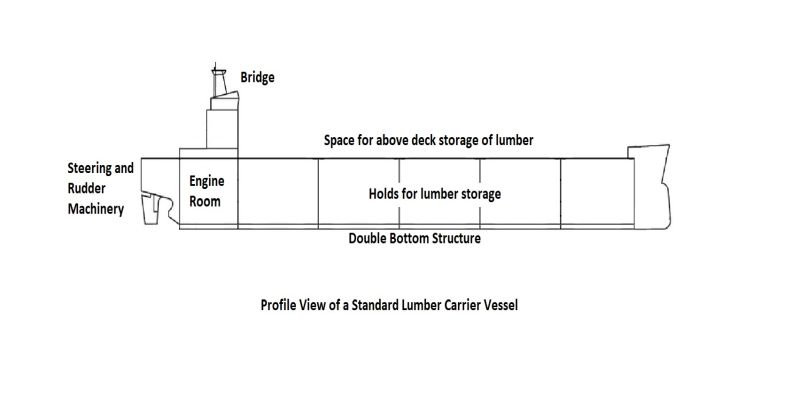
In most lumber carriers, a double bottom hull is used. A double bottom is similar in concept to the side shell and is constructed by having two horizontal surfaces separating the cargo from the water outside the hull. It primarily serves to prevent spillage in case of liquid and gaseous goods.
Additionally, in the case of lumber carriers, it adds stiffness to the hull of the ship. In most bulk carriers, there is a long tunnel running along the length of the ship, within the double bottom. Known as the duct keel, it provides a quick route to access any part of the ship. It contains space for equipment to be stored, and also for any maintenance work to be carried out.
Since this tunnel often reaches over 200 meters in length and the crew may be required to stay within it for extended periods of time, air conditioning and ventilation systems are provided for the safety of the crew members. Safety regulations generally restrict the duct width to be within 2 meters. As it runs underneath the cargo holds, it can be used even during loading and unloading operations.
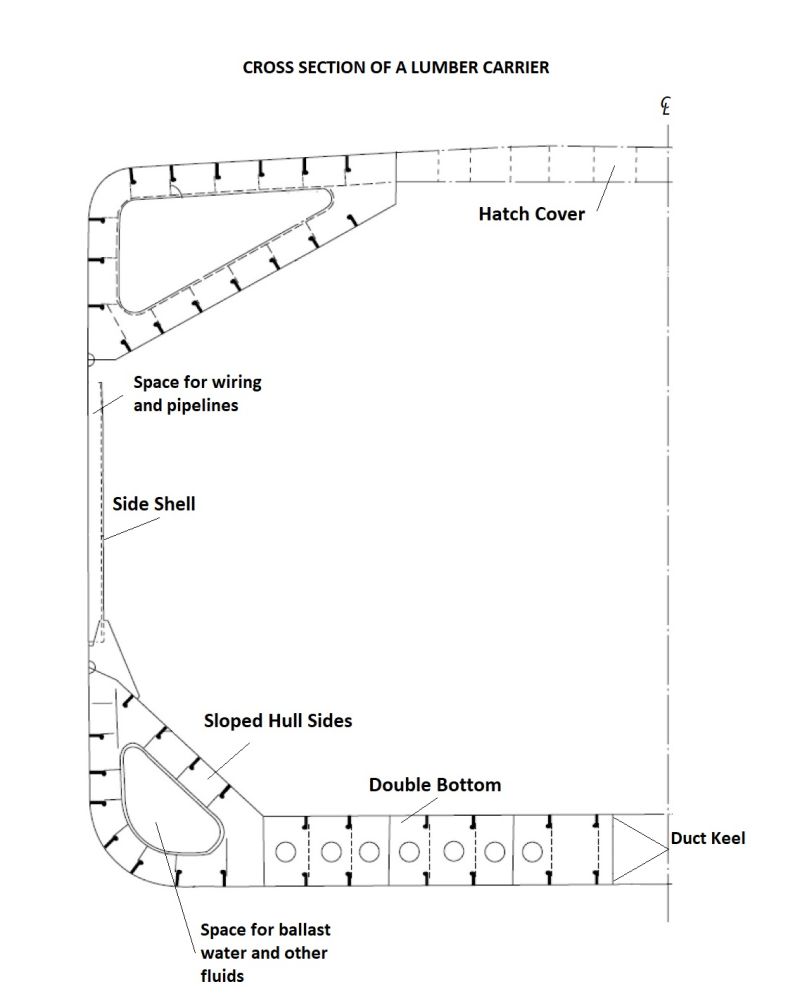
The upper deck houses hatch covers and hydraulic systems. In addition, piping and electrical equipment are also present on the deck. In case of lumber carriers, specialized holds, restraint points, and pad eyes are provided to tether down any lumber that may need to be stored above deck.
Ropes and other restraints with a large yield strength are also provided to hold the goods down during a voyage. As unprocessed timber is susceptible to rotting when it is soaked in water, tarpaulins and other covering materials are often used to protect the goods from spoilage. Since it is important that no water be allowed to accumulate near such timber, the goods are usually covered for the entire duration of the voyage.
The bridge is located at the top of the superstructure, that is often near the aft of the ship. The remainder of this structure contains the galley, machinery units, and housing quarters for the crew and officers. There may also be lockers for the storage of essential equipment in specified regions.
The engines and associated machinery are placed near the keel of the vessel at the aft. The engines rest on specialized shockproof floors that redirect the vibrational forces away from the sensitive regions of the vessel. The vibrational forces and shocks are usually carried to the hull plates and are then redistributed to prevent any structural fatigue.
As with other vessels, most bulk carriers use twin propellers powered by two large marine diesel engines that generally operate under two stoke and low-speed conditions. Low-speed propellers are preferred to reduce the effects of cavitation, especially on a ship of this size.
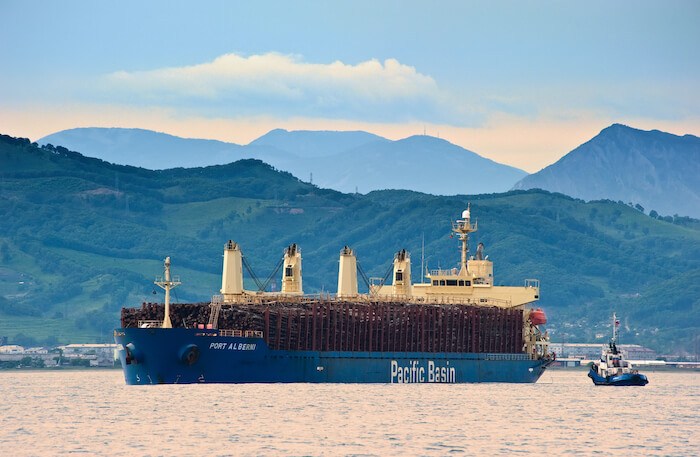
There are generally between four to six holds on most bulk carriers spanning above 200 meters. Multiple holds are required to act as protection against any flooding that may occur. In the event of water entering any hold, the separation layer ensures that the remaining areas of the ship are not affected.
These holds are divided using transverse bulkheads running along with the breadth of the vessel. Generally, longitudinal bulkheads are not required, as long as the cargo is properly stowed. However, as there is a tendency for lumber to shift during the journey, some shipowners construct a single longitudinal bulkhead running along the centre plane of the vessel.
This reduces a phenomenon known as the Free Surface Effect (FSE) that occurs when loose cargo shifts within the holds. It is responsible for a majority of flooding and sinking scenarios, as it rapidly destabilizes a floating ship. Longitudinal bulkheads drastically reduce this effect by restricting the cargo shift.
The hatch covers present over the individual holds are large enough to enable cranes to load and unload the goods with ease. Cranes may occasionally be present on the deck of the vessel but are not used in the majority of lumber carriers.
Lumber Carrier Operations
In this section, we will take a look at the various operations that take place on lumber carriers.
The first operation is the loading procedure that takes place either from a port or from a separate loading facility. Separate facilities are only feasible when the lumber processing plant is situated near a canal or river that is wide enough to accommodate a fully loaded bulk vessel.
Loading makes use of large cranes that are present dockside, and in some cases on the deck of the vessel. On the dock, the lumber is collected and prepared for shipment. Batches of up to 10 pieces are bound together and are then placed inside the holds using cranes. Usually, bulldozers are also lowered into the hold to arrange the lumber at the base of the vessel.
Once this is done, the bulldozer is lifted back out, and the cranes handle the remaining arrangements. It is important that the pieces are tethered at regular intervals to prevent shifting. For this, restraints usually run along with the breadth of the vessel at fixed positions within the hold.
Once the holds have been filled and sealed using the hatch covers, the cranes begin to load lumber on to the deck. This is dependent on the type of cargo and possible weather conditions on the route. Lumber is primarily loaded around the hatch covers, tethered, and then covered with protective material. After that, stacks of lumber are loaded on to the remaining area of the deck.
The hatch covers need to be suitably reinforced to prevent any sort of damage while loading. Fabricated timber pieces are stored on pallets and are stored within the hold to prevent any damage. While all efforts are made to reduce contact with water, ventilation is often required for the cargo such that any existing dampness may be removed. For this, specialized covers and protective layers have been designed that allow the lumber to stay dry. It is also important to ensure that the lumber is absolutely dry prior to loading.
The next operation is unloading that can occur either at a port or surrounding facility. The cargo stored above decks is first removed using cranes. Once the area surrounding the hatch has been cleared, surveyors and dock officials ensure that the hatch covers have not suffered from any damage.
After clearance, the covers are opened and cranes begin the unloading process from each of the holds. Towards the bottom of the hold, bulldozers are lowered to collect the cargo and prepare it for lifting. After the entire cargo hold has been cleared, thorough cleaning of the entire ship is undertaken to remove any possible rust that may have occurred through contact with moist wood. Fumigation is also carried out within the holds. Once certified and cleared by the port authorities, the ship is allowed to pick up its next load.
Lumber carriers can take anywhere up to 48 hours to complete the loading and unloading procedures, as compared to 12 hours for containers vessels and 26 hours for large tankers.
Problems Faced by Lumber Carriers
Lumber carrying vessels tend to suffer from structural damages and loss of cargo, owing to the unstable nature of goods that they transport. The International Maritime Organization (IMO) has fixed guidelines on the transport of lumber.
The primary reason for the damage is improper tethering. There are a large number of wires and chains used to hold goods within the allotted area, and it is essential that the wires are used in the appropriate position.
When loading the cargo, a meshed pattern of wires is laid out between several layers to keep the goods in place. It is also important to ensure that the wires are properly tethered to restraints and supports on the hull.
As wooden logs may shift during the voyage, it is suggested that the cargo situated above deck is stored near the fore and aft regions of the vessel, and not preferably on the hatch covers.
Damage to the hatch covers can be expensive and may even put the ship out of commission. Although it is suitably reinforced with support members of high scantling, the hatch openings represent the weakest points on the main deck. Thus, to prevent any form of damage, cargo is not loaded on to the covers.
Another issue often faced by lumber carriers is vessel rolling. Rolling refers to the dynamic motion of the vessel in a transverse direction i.e., rotation from port to starboard. To prevent the cargo from breaking loose and falling overboard due to rolling, the main deck is at a lower height as compared to the side of the vessel.
The timber ends are compactly fit, to prevent any shifting or movement. In addition, there are several regulatory standards on the maximum height of the stowed cargo. It is important to pay heed to the vessel limits specified in the trim and stability handbook. There is a load limit known as the Timber Load Line (TLL) that specifies the tonnage of timber that may be loaded on the deck of a vessel. Prior to loading a vessel, it is important to adhere to safety regulations and the limitations of the ship.
Do you have info to share with us ? Suggest a correction

About Author
Ajay Menon is a graduate of the Indian Institute of Technology, Kharagpur, with an integrated major in Ocean Engineering and Naval Architecture. Besides writing, he balances chess and works out tunes on his keyboard during his free time.
Latest Naval Arch Articles You Would Like:
Subscribe To Our Newsletters
By subscribing, you agree to our Privacy Policy and may receive occasional deal communications; you can unsubscribe anytime.









